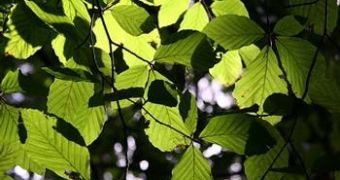A new study has recently revealed that it may be more constructive to plant trees in the middle of the street using a more widely spaced layout plan than cramming many in the same place. According to the paper, while those plants with some distance between them are very efficient at soaking up carbon dioxide, those that are close to each other have the potential to trap dangerous gases in the “canyons” that are formed when they are planted. Cities in Europe, where trees are planted both in the middle of the road and on the sidewalk in high densities, are cited as negative examples in the paper.
A team of researchers from Switzerland and Germany conducted this study along routes known as “urban canyons,” streets that are surrounded by very tall and closely packed buildings on both sides. The most important analyzed factor was the influence that the trees themselves had on ventilation and pollution levels in their surrounding areas. Additionally, the experts complemented their research by constructing wind tunnel models of such urban canyons, and analyzing how the air flew within them.
Swiss expert Christof Gromke, at the WSL Institute for Snow and Avalanche Research SLF, in Davos, and German scientist Bodo Ruck, from the University of Karlsruhe Institute for Hydromechanics, also looked at the differences that were visible between layouts in which many trees existed on central lines on streets, and situations where they were spaced further apart from each other. They analyzed air flow along these routes, as well as the air lifting and coming down in the canyons.
The experts found that trees with large canopies had a detrimental effect on pollution, in that their leaves did not absorb the carbon dioxide, but trapped it below the leaves. This means that the pollutants cannot rise into the atmosphere, and that the refreshing air above, which would have otherwise swept in and unclogged the street air, is also prevented from doing so, ScienceDaily informs.
The team believes that the most appropriate way of planting trees is to ensure that a space at least as large as their canopies exists between them. The wind tunnel tests revealed that this ensured the rise of pollutants and the flow of clean air from above. The research could offer City Halls presiding over towns with established tree lines an instrument to help them determine how to cut the trees and where, so as to ensure that the correct air flow is generated.

 14 DAY TRIAL //
14 DAY TRIAL //